It’s been 91 years since amateur astronomer Clyde Tombaugh first spotted Pluto on a set of glass negatives. Since then, the object has been declared a planet, named, and, of course, demoted to a dwarf planet in 2006. Whatever its status, our fascination with Pluto has held fast. But until very recently, we didn’t have any clear images of the distant object, which is so far from the Sun that it hasn’t completed half of its orbit since it was discovered. When NASA’s New Horizons spacecraft visited Pluto in 2015, it captured never-before-seen details of the dwarf planet’s terrain and coloration, fundamentally changing our view of this little world.
Before then, artists created renderings of Pluto based on the best science available. As it turned out, many of those illustrations were on the right track. Here, we’re showcasing some of those earlier visions of Pluto and how they compare to the 2015 photoshoot.
A dimly lit surface
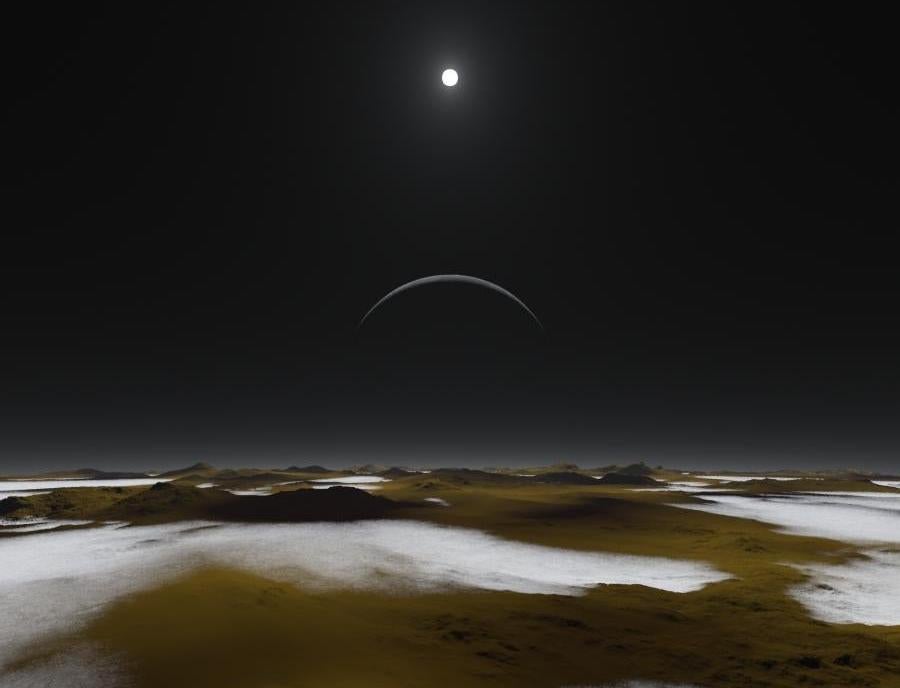
In this rendering, created in 2015 in anticipation of New Horizons’ arrival at the dwarf planet, Charon rises of Pluto and the Sun is a distant light. The artist interpreted Pluto’s surface features based on previous, fuzzy observations by the Hubble Space Telescope. Based on Pluto’s distance from the Sun, scientists knew that gases on its surface — namely nitrogen, carbon monoxide, and methane — would freeze, according to a Hubble release.
The illustration also includes several ridges; we now know that Pluto has some mountains that are nearly 3,048.00 m tall and made of frozen water ice. The Sun may be a little large in this illustration — on Pluto’s surface, our star is 1,000 times fainter than it is on Earth.
Here’s Pluto’s icy terrain, as seen from New Horizons during its July 2015 flyby:
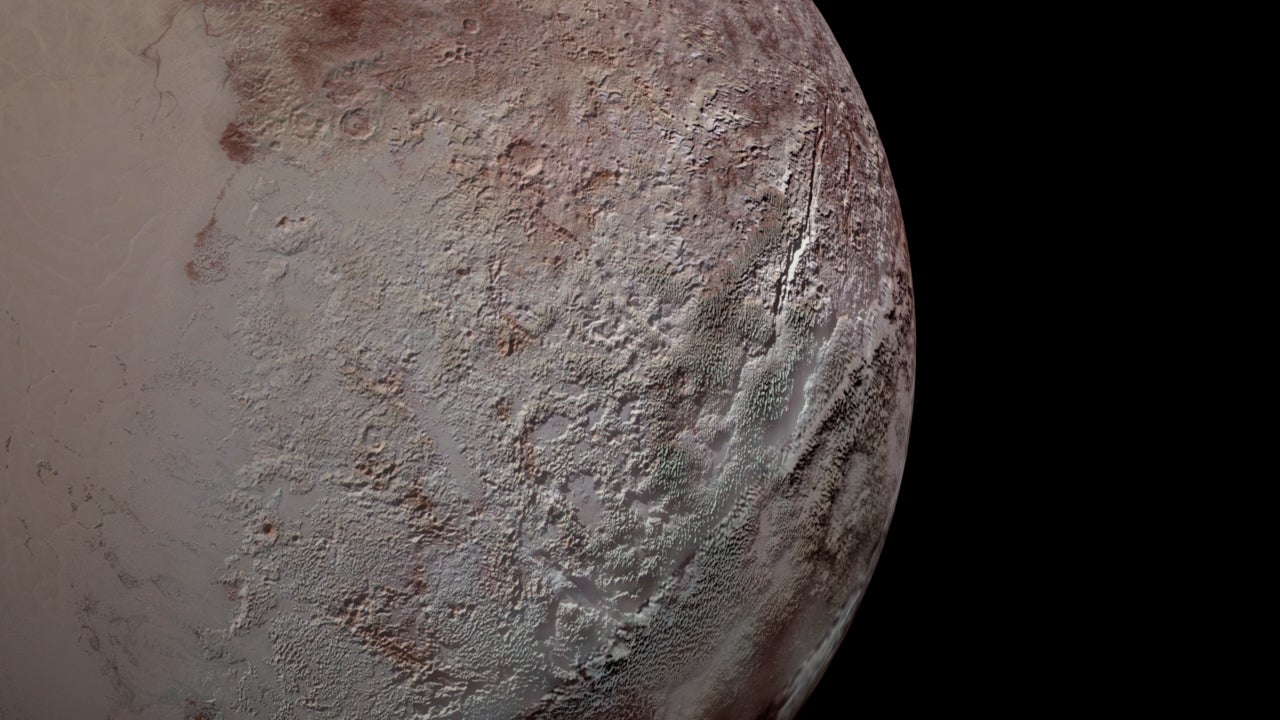
A frosty atmosphere
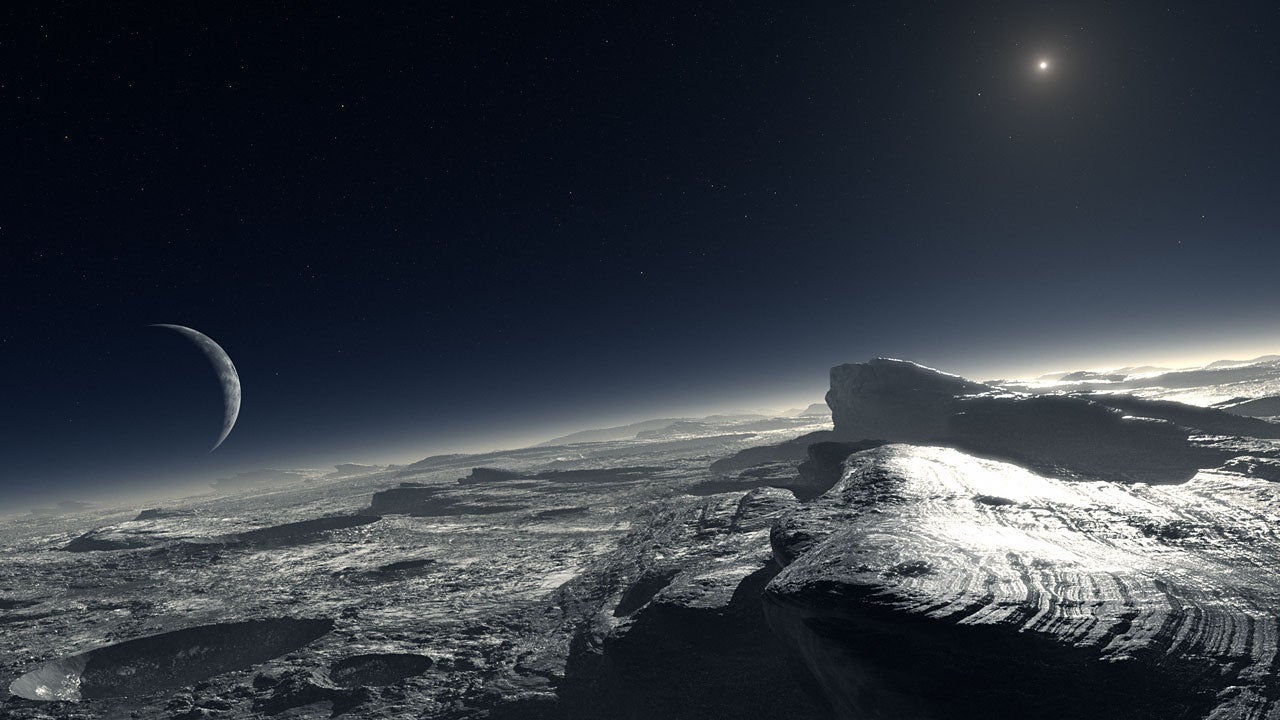
This 2009 illustration imagines the surface of Pluto based on two models astronomers built to understand properties of Pluto’s atmosphere. The atmosphere, discovered in 1998, is very thin but expands when the dwarf planet is closest to the Sun, as frozen gases on its surface sublimate. The pockmarks in this illustration appear to be impact craters, though New Horizons’ visit to Pluto also revealed oblong sunken structures on the surface, which may be rock that collapsed when frozen water beneath the surface melted.
The illustration also shows Charon, one of Pluto’s moons, which orbits at the same rate that Pluto rotates. That means Charon never sets on Pluto and actually sits in the same place in the Plutonian sky at all times. This artist also inserted patches of methane ice on the dwarf Planet’s surface, a discovery that was made in the 1970s.
Anticipating New Horizons

This artist’s rendition of Pluto from early 2015 sees the dwarf planet as quite pitted, with Charon flanking the planet on the left. Before New Horizons reached its target, scientists had to rely on educated guesses as to Pluto’s structure and makeup, which were turned into illustrations like the one above.
While these illustrations capture the imagination, if there’s one thing they’re missing, it’s the amount of detail and variation that Pluto’s actual surface contains. New Horizons images revealed great geological diversity: plains pockmarked by craters, rippled terrain that looks like sand dunes, endless fields of frozen nitrogen, and snowcapped mountains.
A fuzzy Pluto seen by Hubble
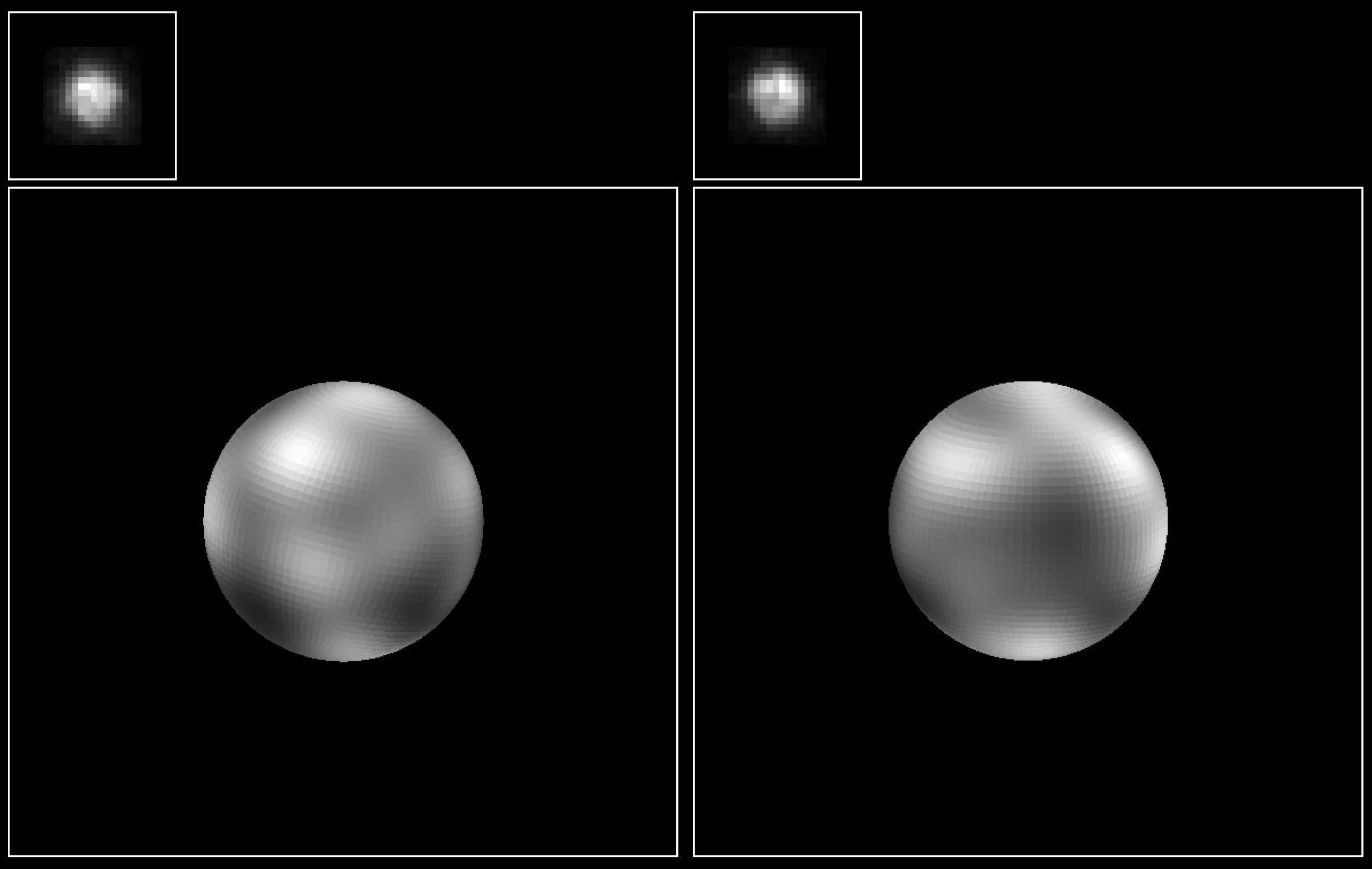
Our first half-decent view of Pluto came from the Hubble Space Telescope in 1998. The images show two hemispheres of Pluto at a distance of 3 billion miles from Earth, and they were taken in blue light using the telescope’s Faint Object Camera. The actual images by Hubble are at top, and the larger blow-ups are a map of the planet built through image processing of the Hubble data.
Three faint moons

A Hubble Space Telescope image taken in 2005 shows a bare-bones view of Pluto and three of its moons: Nix, Hydra, and Charon. At the time this image was taken, the two smaller moons were newly discovered and are visible as the two fainter dots to the right of Pluto and Charon (and the image doesn’t even capture Kerberos and Styx, two other moons found later).
Charon was only discovered in 1978, nearly 40 years after Pluto, which should tell you how hard it is to understand something from over 4.8 billion kilometres away. Nix and Hydra are about 5,000 times fainter than Pluto and up to three times farther from the dwarf planet than Charon, according to NASA.
The New Horizons spacecraft captured this enhanced-colour view of Pluto’s moon Charon in July 2015:
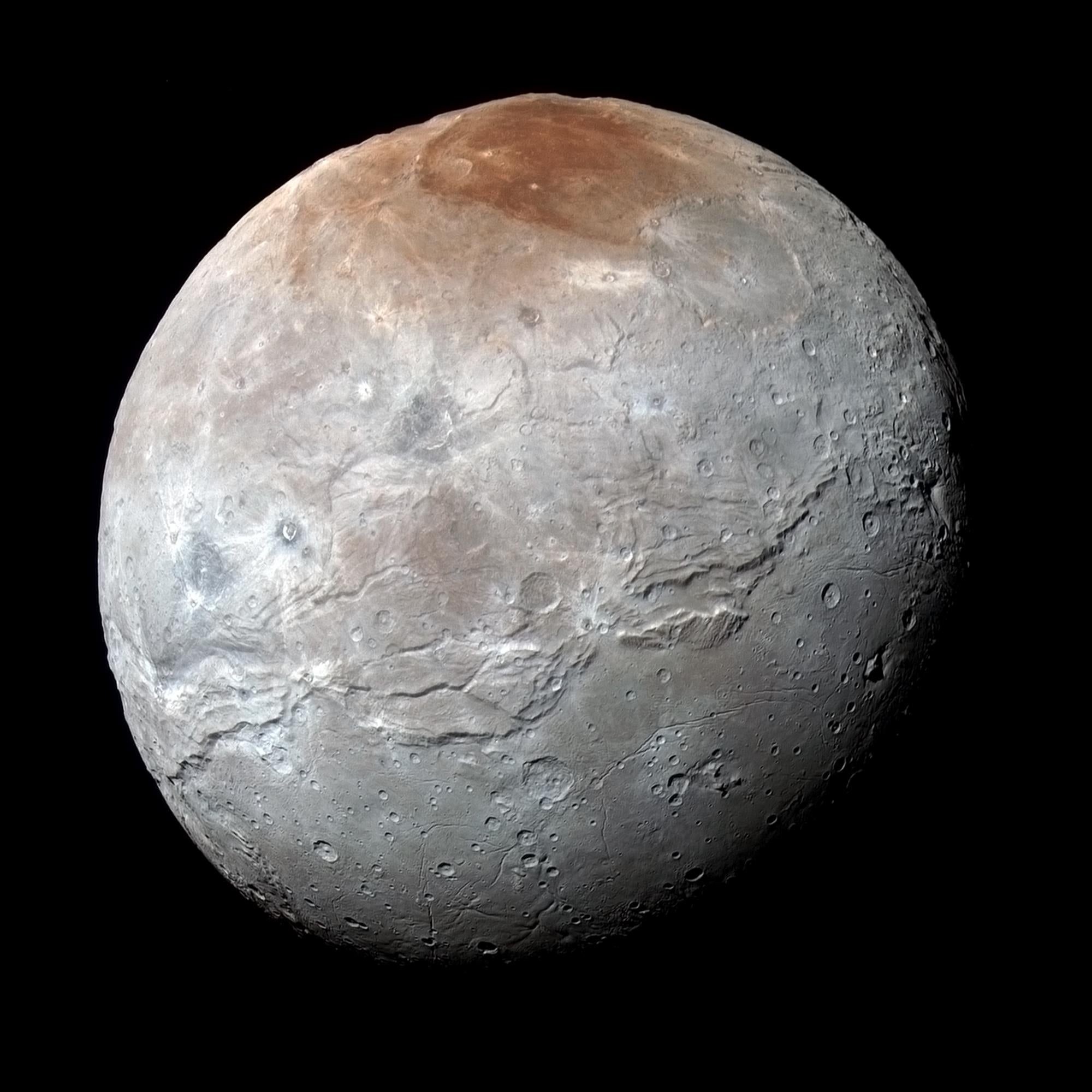
Pluto’s north pole
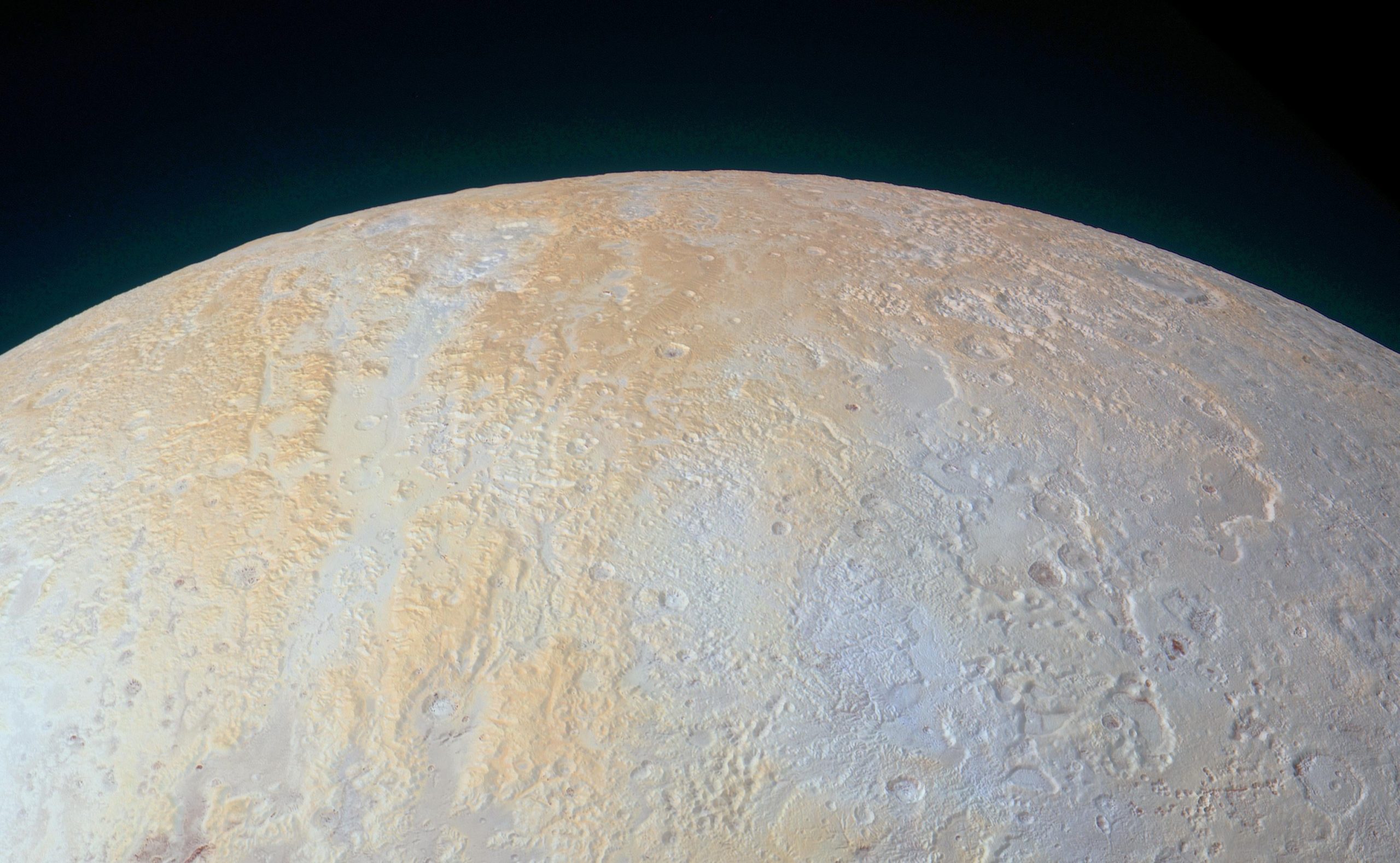
When New Horizons arrived at Pluto in 2015, it took high-quality images of the dwarf planet’s surface. That included shots of Pluto’s north pole, shown in this enhanced-colour image. The wide canyons may suggest some amount of ancient tectonic activity. The image was taken when the probe was just over 33,796 km from the dwarf planet.
The region also has a number of weird pits. According to a NASA release published along with the image, the pits — which are as wide as 72 km across and 5 km deep — may have been caused by subsurface ice melt, which collapsed the ground above.
Pluto’s heart
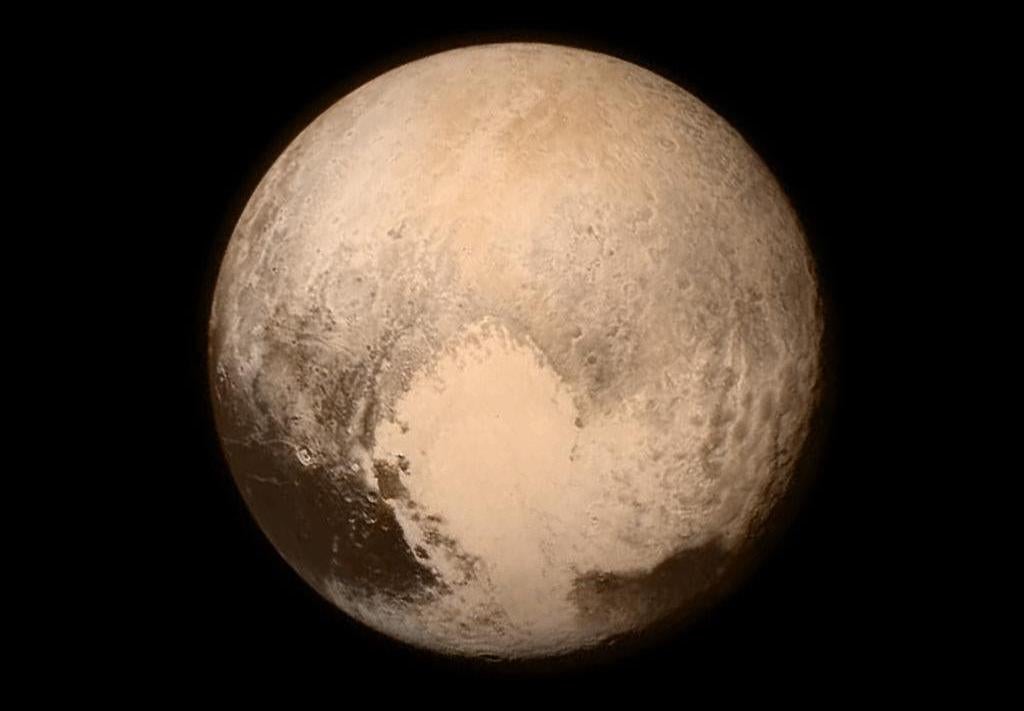
This iconic image by New Horizons was taken when the probe was about 766,048 km out. According to a NASA release, this is the last, most detailed image of the dwarf planet sent to Earth before the spacecraft made its closest approach.
We’ve come a long way

For most of the 91 years we’ve known about Pluto, we lacked the technology to see it in any detail. NASA’s animation, above, compiles different observations of the dwarf planet taken over a few decades, showing our evolving view of this far-away world. The first frame is a zoomed-in view of how the dwarf planet looked when it was first discovered by Tombaugh. The following images are views taken by Hubble and New Horizons. Official planet or not, Pluto remains an enigmatic member of our solar system.
